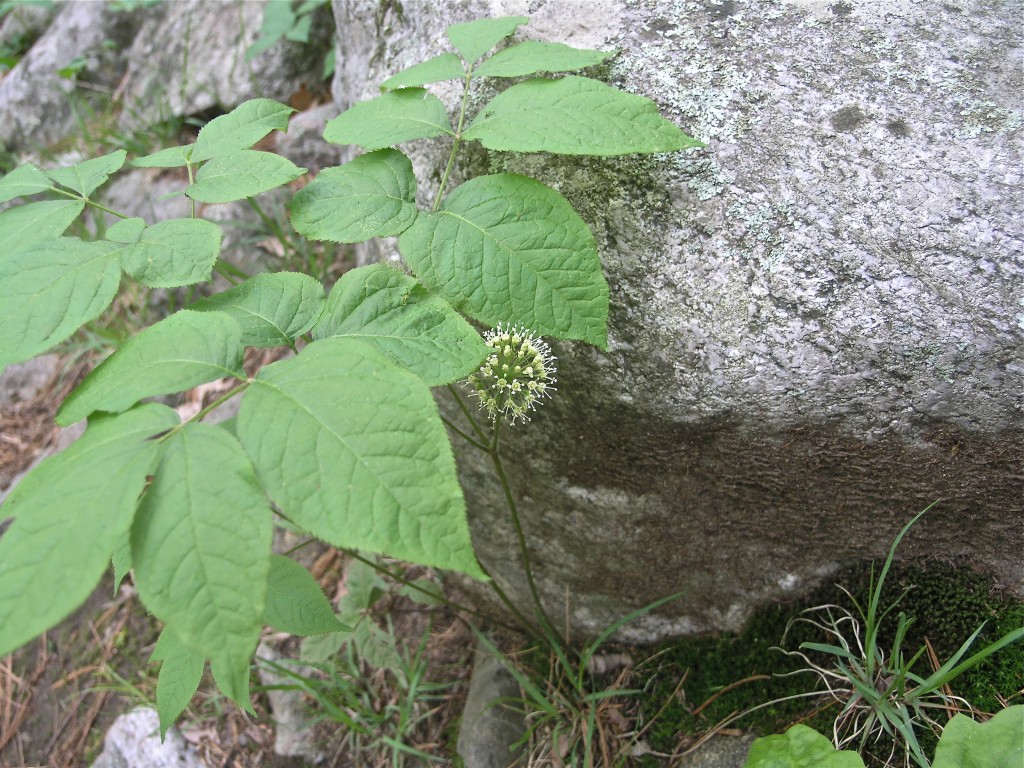
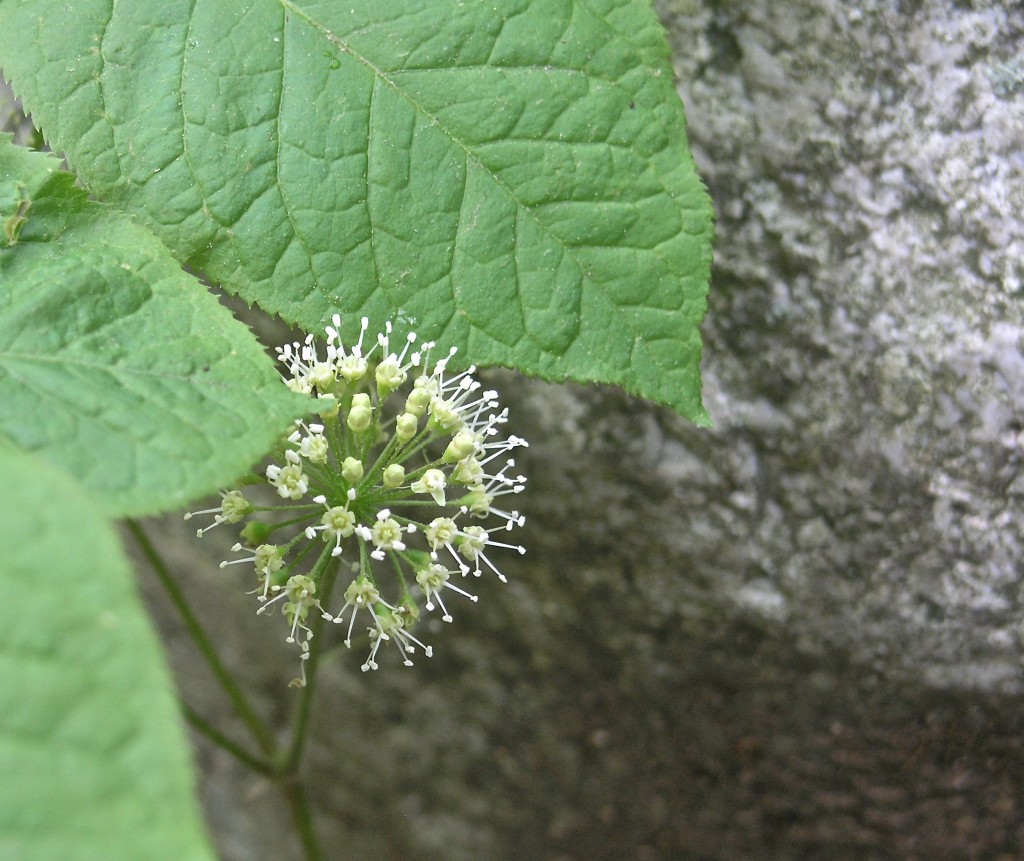 In the ginseng family, which explains why the bloom looks so much like wild ginseng. Will have purple-black berries, which are edible and a little sweet. This is not “true” Sarsaparilla. 1-2 feet tall. Native.
In the ginseng family, which explains why the bloom looks so much like wild ginseng. Will have purple-black berries, which are edible and a little sweet. This is not “true” Sarsaparilla. 1-2 feet tall. Native.
Wild Sarsaparilla (Aralia nudicaulis)

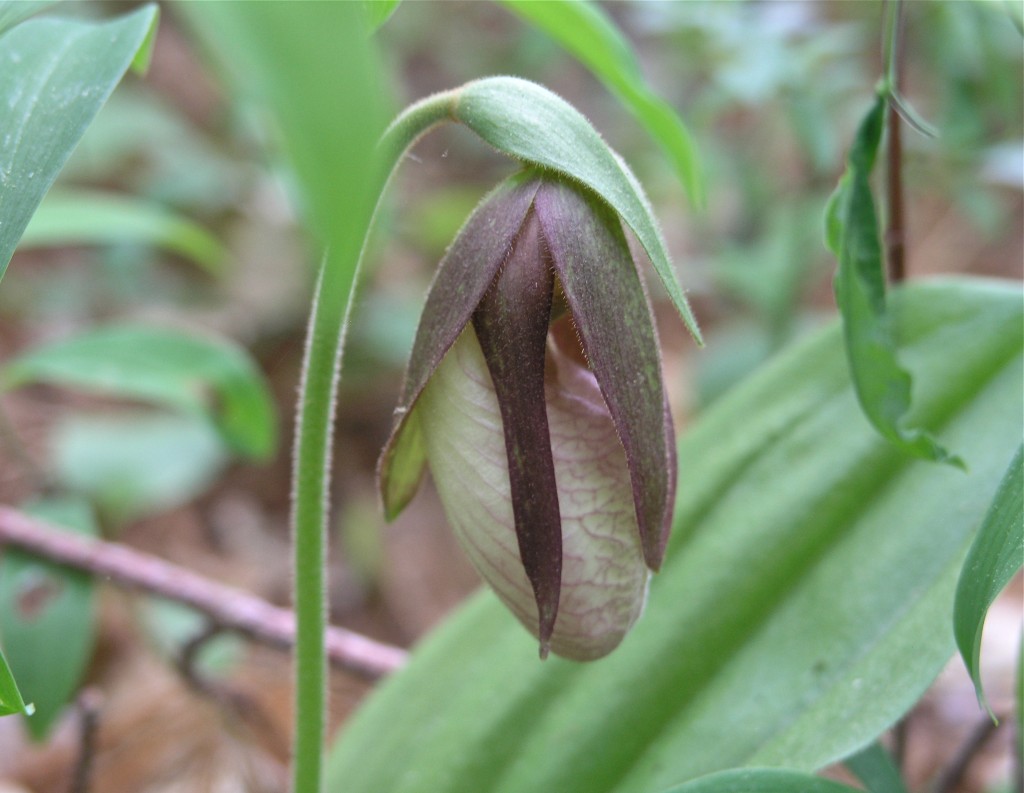
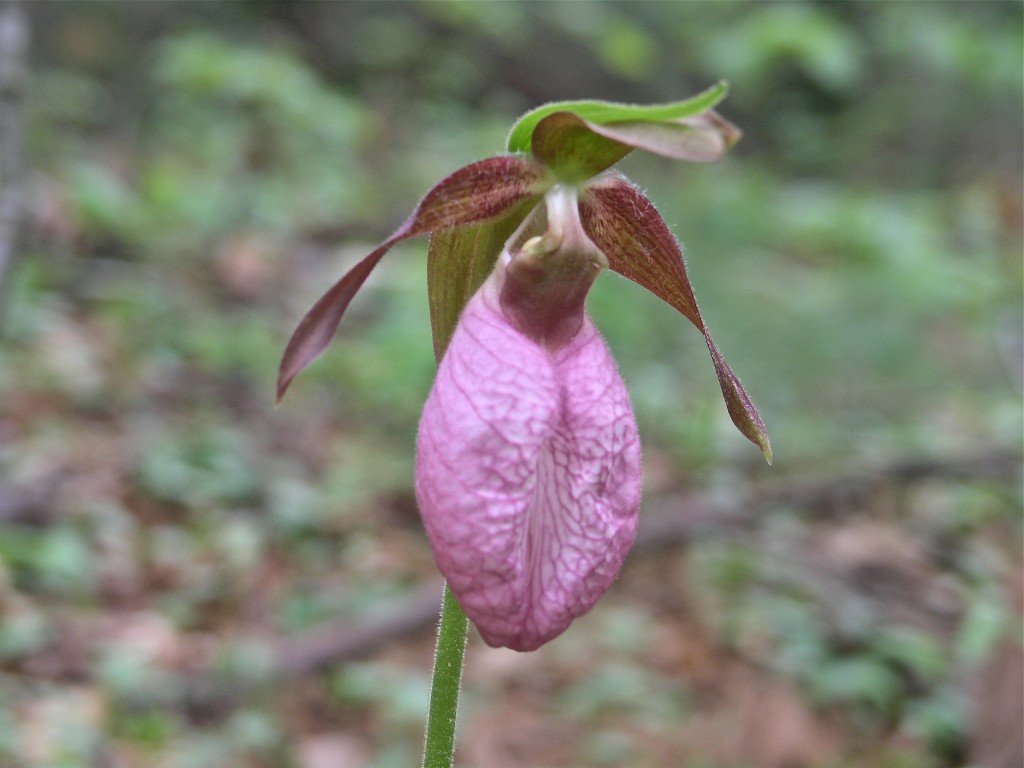 I thought I was finding white lady-slippers along with this pink one, but A.F. Donna thinks the white ones might just be pink ones that aren’t fully ripe. And I think she must be right. I suppose that white one will turn pink as it lifts its… hair out of its eyes… I love the purple sheen along the top. They can live to be over 20 years old. Orchid family.
I thought I was finding white lady-slippers along with this pink one, but A.F. Donna thinks the white ones might just be pink ones that aren’t fully ripe. And I think she must be right. I suppose that white one will turn pink as it lifts its… hair out of its eyes… I love the purple sheen along the top. They can live to be over 20 years old. Orchid family.
U.S. Forest Service: “In order to survive and reproduce, pink lady’s slipper interacts with a fungus in the soil from the Rhizoctonia genus. Generally, orchid seeds do not have food supplies inside them like most other kinds of seeds. Pink lady’s slipper seeds require threads of the fungus to break open the seed and attach them to it. The fungus will pass on food and nutrients to the pink lady’s slipper seed. When the lady’s slipper plant is older and producing most of its own nutrients, the fungus will extract nutrients from the orchid roots. This mutually beneficial relationship between the orchid and the fungus is known as “symbiosis” and is typical of almost all orchid species.”
Also: “Pink lady’s slippers also require bees for pollination. Bees are lured into the flower pouch through the front slit, attracted by the flower’s bright color and sweet scent. Once inside, the bees find no reward, and discover that they are trapped, with only one point of escape. Inside the pouch, there are hairs that lead to a pair of exit openings, one beneath each pollen mass. The bee must pass under the stigma, so if it bears any pollen from a visit to another flower, it will be deposited before picking up a fresh load on the way out.”
no wonder they’re rare.
Pink Lady-slipper, Moccasin flower (Cypripedium acaule Ait.)
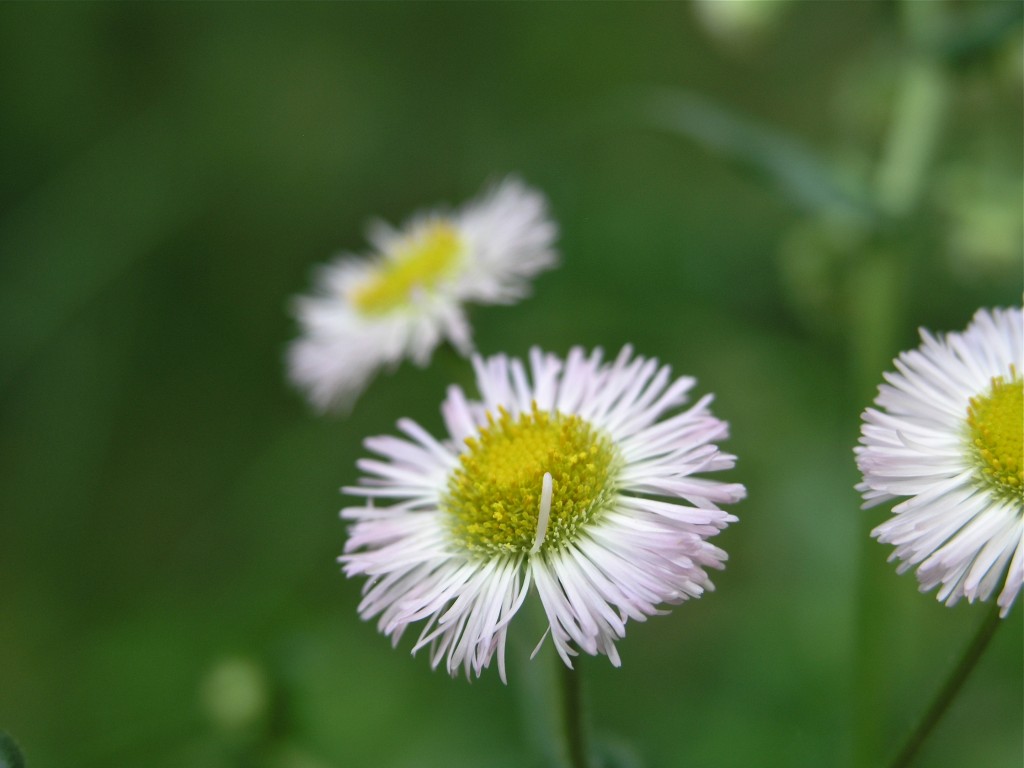 Alert Flowerophile Donna has mentioned how sometimes my photos look so much better than the weedy little plant we spot out in the field. It’s true, these are kind of glamour shots for weeds. For instance, I would ordinarily yank this right out of my yard… but it’s rather nice on a macro level… the flowers are about a half inch wide.
Alert Flowerophile Donna has mentioned how sometimes my photos look so much better than the weedy little plant we spot out in the field. It’s true, these are kind of glamour shots for weeds. For instance, I would ordinarily yank this right out of my yard… but it’s rather nice on a macro level… the flowers are about a half inch wide.
Common Fleabane (Erigeron philadelphicus)
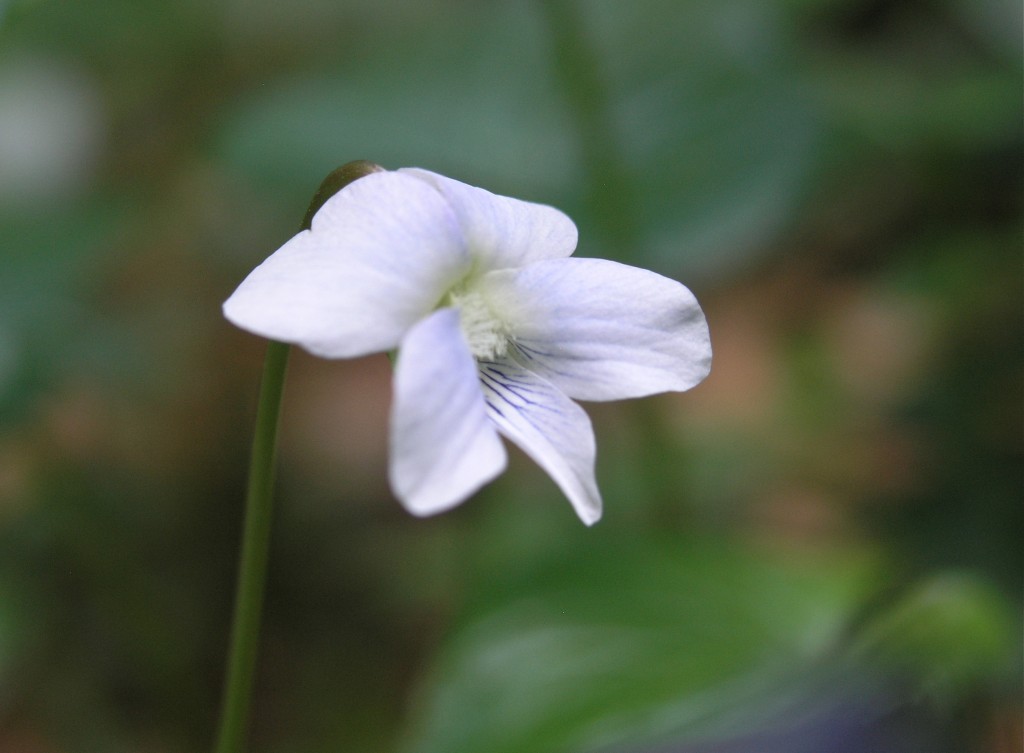 My understanding is that this is a color form of regular violets — the pale grayish lavender is supposed to resemble the color of Confederate uniforms. A gift from Dr. Whiteside. Native.
My understanding is that this is a color form of regular violets — the pale grayish lavender is supposed to resemble the color of Confederate uniforms. A gift from Dr. Whiteside. Native.
Confederate Violet (Viola sororia priceana)
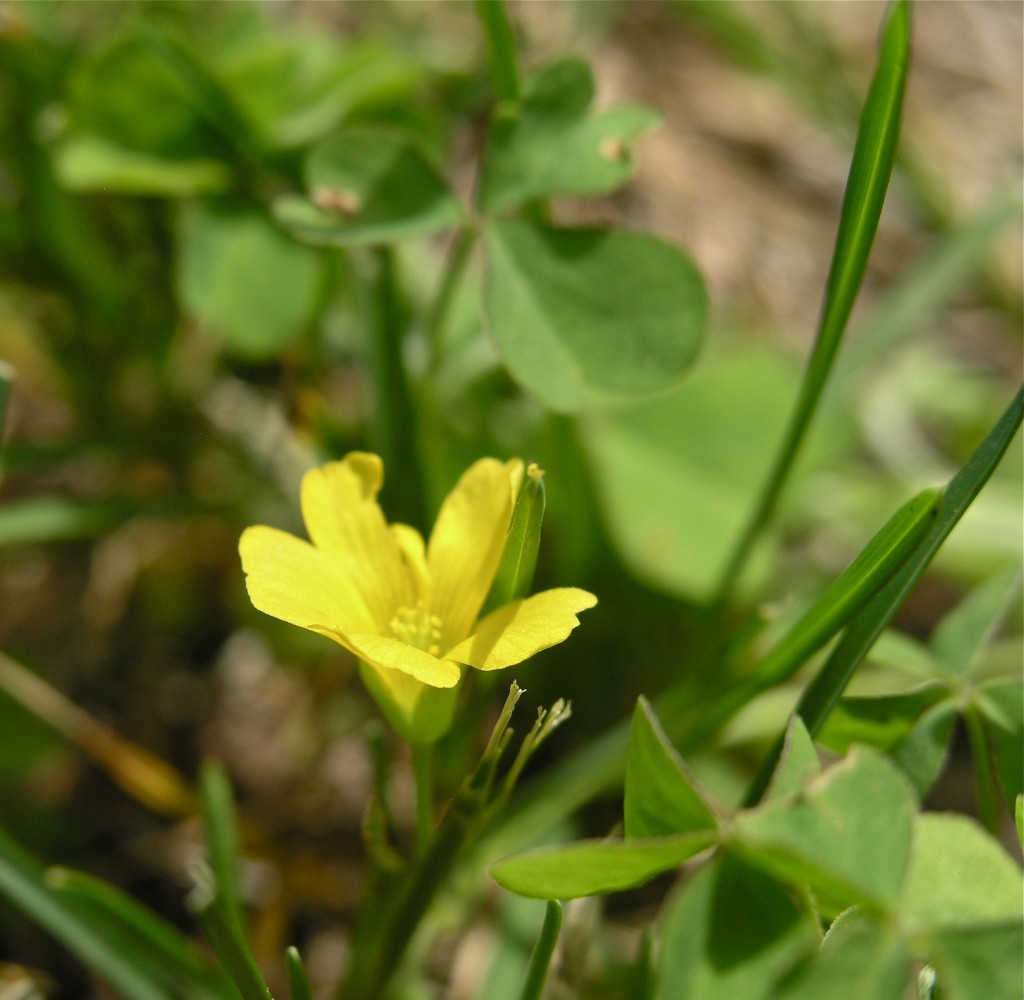 A pretty little edible plant with leaves like shamrocks. “All parts are edible, with a distinct tangy flavor.” The green pods have a tartness similar to rhubarb, and the leaves can be brewed to make a drink like lemonade. Contains vitamin C. Can be added to salads for color and flavor. Native to North America.
A pretty little edible plant with leaves like shamrocks. “All parts are edible, with a distinct tangy flavor.” The green pods have a tartness similar to rhubarb, and the leaves can be brewed to make a drink like lemonade. Contains vitamin C. Can be added to salads for color and flavor. Native to North America.
Yellow Wood Sorrel (Oxalis stricta)
Found a large group of these along with a bunch of Smooth Solomon’s Seal in a patch of woods in Sunderland, Massachusetts, just north of Amherst. I think that’s close enough to call local, although I have not found such big groups in my usual haunts. It’s evidently called False because the leaf is similar to Solomon’s Seal, but true Solomon’s Seal has pendular blossoms. Lily family.
The Ojibwa tribe harvested the roots for eating, and cooked them in lye water overnight to remove the bitterness and neutralize their strong laxative qualities.
From Wikipedia: This plant can act as a strong laxative in sensitive individuals. A poultice made from the roots of this plant was used to treat sunburns. The roots were often dried and then smoked by several Eastern tribes as a treatment for hyperactivity in children and depression. Also used by Native Americans as a cough suppressant. (! that’s a useful plant!)
False Solomon’s Seal (Smilacina racemosa)